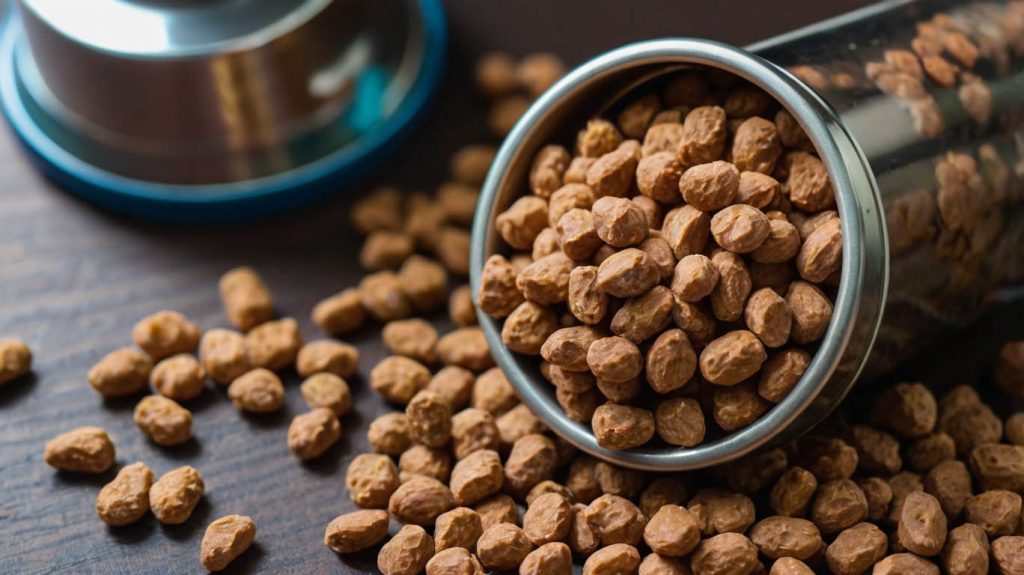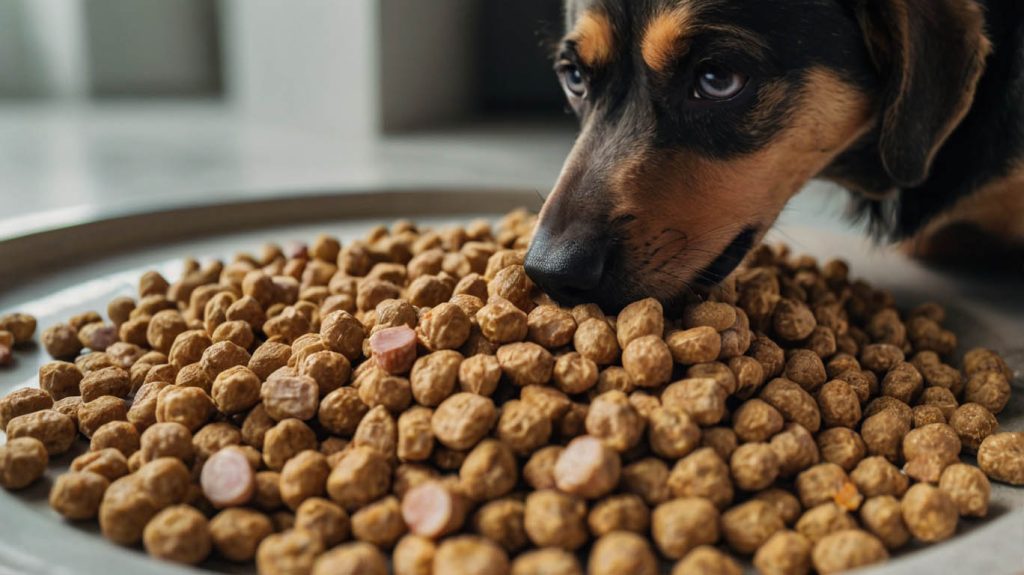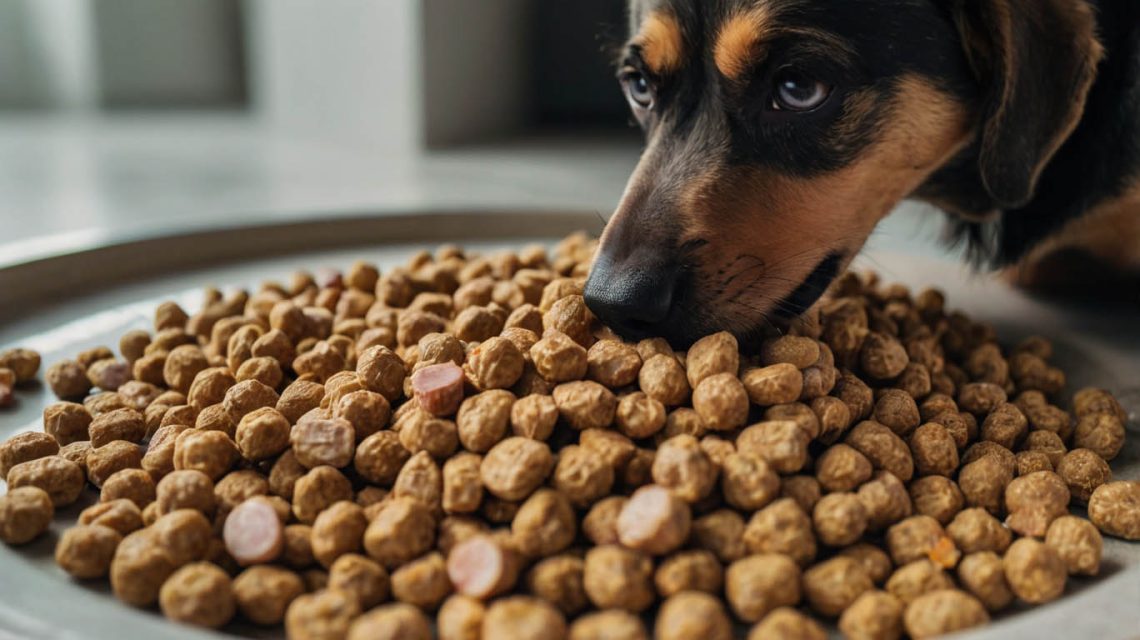The Ultimate Guide to the Best Dog Food for Diabetic Dogs
Your veterinarian has just delivered the news: “Your dog has diabetes.” The diagnosis can feel overwhelming. Suddenly, your life is filled with new terms like “glucose curves,” “insulin injections,” and “blood sugar levels.” In the midst of this confusing new reality, you realize that one of the most fundamental parts of your dog’s life—their daily meals—now carries immense weight. Consequently, you begin a crucial and often confusing search for the best dog food for diabetic dogs.
Choosing the right food is not just about nutrition anymore; it is a cornerstone of your dog’s medical treatment. The right diet can help stabilize their blood sugar, reduce the required insulin dosage, and dramatically improve their overall quality of life. Therefore, this guide is designed to be your trusted resource. We will break down the key nutritional requirements, explain what to look for on a food label, and help you partner with your veterinarian to find the best possible diet for your beloved companion.
The Critical Role of Diet: Why the Best Dog Food for Diabetic Dogs Matters
Before we dive into specific food types, it’s essential to understand why diet is so critical for a diabetic dog. Canine diabetes is a condition where the body cannot effectively regulate blood sugar (glucose) levels, usually because of a lack of insulin.
The food a dog eats is broken down into glucose. In a non-diabetic dog, insulin helps move this glucose from the blood into the cells for energy. In a diabetic dog, this process is broken. The goal of a diabetic diet is to manage how quickly food is converted into glucose. A diet that causes a rapid spike in blood sugar after a meal will make the diabetes much harder to control. In contrast, the best dog food for diabetic dogs will promote a slow, steady release of glucose, which works in harmony with their insulin injections to keep their levels stable.

Key Components of the Best Dog Food for Diabetic Dogs
When you start reading food labels, it can feel like you’re trying to decipher a foreign language. Here are the three key components you need to focus on.
1. High-Quality Protein
Protein is essential for maintaining lean muscle mass, which is especially important for diabetic dogs.
- What to Look For: Look for a named animal protein source as the first ingredient on the label (e.g., “chicken,” “beef,” “salmon,” not vague terms like “meat meal”).
- Why It’s Important: A high-protein diet helps your dog feel full and satisfied without relying on carbohydrates that can spike blood sugar.
2. High Fiber and Complex Carbohydrates
This is perhaps the most critical element of a diabetic diet.
- What It Is: Fiber is a type of carbohydrate that the body cannot easily digest. Complex carbohydrates (like sweet potatoes, barley, or oats) are digested much more slowly than simple carbohydrates (like corn, wheat, or white rice).
- How It Helps: High-fiber diets slow down the absorption of glucose from the digestive tract into the bloodstream. This prevents the dangerous post-meal blood sugar spikes. It’s the key to a slow, steady energy release. Therefore, the best dog food for diabetic dogs will always be rich in fiber.
- Look For: Ingredients like beet pulp, psyllium husk, whole grains, and vegetables.
3. Moderate, Healthy Fats
While fat is a necessary part of a dog’s diet, excessive or unhealthy fats can be problematic for diabetic dogs, as they are more prone to pancreatitis.
- What to Look For: A moderate fat content is ideal. Look for healthy fat sources like fish oil (which also provides anti-inflammatory omega-3s) or flaxseed oil.
- Why It’s Important: Managing fat intake helps prevent complications and supports overall health.
Types of Dog Food for Diabetic Dogs: Your Options
There are several routes you can take when choosing a food, and the best one will depend on your dog’s specific needs and your vet’s recommendation.
Veterinary Prescription Diets: The Gold Standard
For most newly diagnosed diabetic dogs, your veterinarian will recommend a therapeutic prescription diet.
- Examples: Brands like Hill’s Prescription Diet w/d or r/d, Royal Canin Glycobalance, and Purina Pro Plan Veterinary Diets DM are specifically formulated to meet the nutritional needs of diabetic dogs.
- Why They Work: These diets are the result of extensive research and are precisely balanced with the high fiber, complex carbs, and high-quality protein needed for glucose control. They are often the easiest and most reliable way to find the best dog food for diabetic dogs.
Over-the-Counter (OTC) Options
If a prescription diet is not an option for financial or other reasons, you can work with your vet to find a suitable OTC food.
- What to Look For: You will need to become an expert label reader. Look for “weight management” or “healthy weight” formulas, as these are often higher in fiber and lower in fat.
- Check the Ingredients: Ensure it has a high-quality protein source and uses complex carbohydrates instead of simple fillers like corn or wheat.
Home-Cooked or Raw Diets
Some owners choose to prepare their dog’s food at home.
- A Critical Warning: This path should only be taken under the strict guidance of a board-certified veterinary nutritionist. It is incredibly difficult to create a properly balanced diet at home, and an imbalanced diet can be very dangerous for a diabetic dog.

The Importance of a Consistent Feeding Schedule
The best dog food for diabetic dogs is only effective when paired with a rigid, consistent schedule.
- Two Meals a Day: Most diabetic dogs do best on two meals a day, spaced approximately 12 hours apart.
- Coordinate with Insulin: The meals must be timed precisely with their insulin injections, as prescribed by your vet. Typically, you will feed your dog, and then give them their insulin shot while they are eating or immediately after.
- No Free-Feeding: Leaving food out all day makes it impossible to regulate their blood sugar.
What About Treats?
Treats can be tricky, as many are high in sugar.
- What to Choose: Look for high-fiber or single-ingredient protein treats. Good options include dehydrated sweet potato chews, green beans, baby carrots, or small pieces of boiled chicken.
- What to Avoid: Avoid commercial treats that are grain-based or contain sugar, molasses, or honey.
Your Vet is Your Most Important Partner
The journey of managing canine diabetes is a team effort, and your veterinarian is the captain of that team. Never make any changes to your dog’s diet, food type, or feeding schedule without first consulting them. Any change in diet will directly impact their insulin needs.
A Controllable Condition, A Happy Life
A diabetes diagnosis is serious, but it is not a death sentence. By making a commitment to finding the best dog food for diabetic dogs and adhering to a strict schedule of feeding and insulin, you can give your companion many more years of happy, healthy, and love-filled life. You are not just managing a disease; you are providing the foundation for their well-being.
What has been your experience finding a food that works for your diabetic dog? Share your successes and tips in the comments below.


